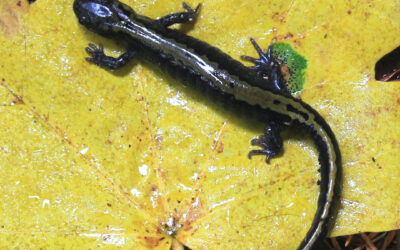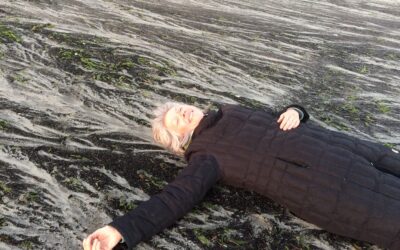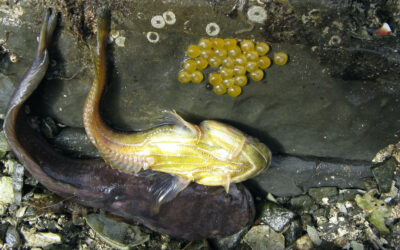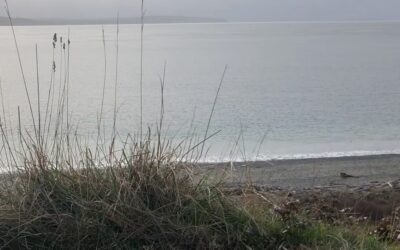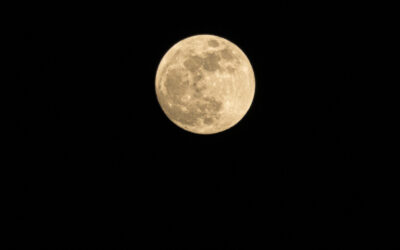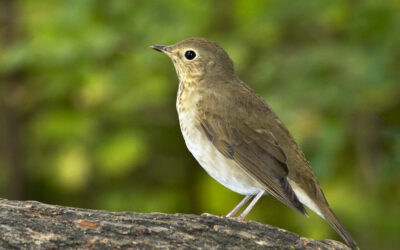Sound Mapping in Nature
by Micaela Petrini, Autumn 2023

Misery Point, Kitsap Peninsula. photo by Micaela Petrini
Sound Mapping in Nature
by Micaela Petrini
Autumn 2023
Do you ever spend time outside with the intent of listening? Closing your eyes, opening your ears, and taking in all of the sounds around you? This might sound like a form of meditation — and maybe it is to some — but when we combine it with the art of nature journaling, we begin to cultivate a practice of keeping track of both our inner and our outer landscapes. Nature journaling is used to keep a record of where we are, what we hear, and where we hear it. Put it together with the presence, and stillness, of meditation… and you get a practice called Sound Mapping. Sound mapping can take a few different forms, but in its essence it requires the participant to go outside, sit down or walk slowly, and spatially record all the sounds they hear. Sound identification isn’t required, nor is it necessary, to be a soundscape artist. Sound mapping can take many forms. Check out some of the options below.
You can take part in sound mapping wherever, even in your own backyard! Try going to different areas and being open, curious, and ready to ask questions: Where are there more sounds? Fewer? Louder? More consistent? Do the sounds change based on time of day? Year?
You can take some of the simplest records by noting the sources of sound. Scientists have lumped all sound into three categories: anthrophony (noise created by humans and their technology), biophony (noise created by animals and plants), and geophony (noise created by the earth’s mechanisms). When sound mapping, take note of how the soundscape around you can be categorized. How does the soundscape change? Which category is heard more often, and where?
In early July, I went out to Great Peninsula Conservancy’s Misery Point Preserve, near the town of Seabeck, and sat down to map some of the sounds I heard. I’ll share my sound map after I steep you in place. Listen to the audio clip below as you continue reading. What sounds can you hear? Are there described sounds that are missing? What do you think you would be able to hear, sitting on the beach, that the microphone isn’t picking up? How does a recording on a phone make sounds different than in real life (e.g., wind)?
Audio Clip
Audio clip by Micaela Petrini and John F. Williams
It’s the Fourth of July weekend, and folks are taking full advantage of the bright sun, cool breeze, and an open, sparkling playground. Boats are moving up and down Hood Canal, and their wakes crash against the stones on the beach. Speedboats, sailboats, fishing vessels, small yachts, kayaks…the voices of the people inside of them carry across the water, bounce off the feeder bluffs behind me, and trickle down to my ears. It sounds like a low phone conversation with bad reception. My innate sense of curiosity makes me momentarily strain to hear conversations better — if I owned a yacht, what would I talk about? If I were kayaking over eelgrass beds, what would I point out to my friends? What would I say to three rowdy kids on a boat over open water?
My attention shifts towards other sounds. Anthrophonic in nature, I hear a family playing in the water; they’re around the bend in the tip of Misery Point, so I can’t see them, but their echoing laughter skips over the water like small, flat stones. The waves, varying in size because of the activity out on the water, crash, pull, and repeat on the rocky beach. Their character reveals the activity out on the water, and they muffle some of the anthrophonic sounds that would otherwise be too sharp and droning.
In the forest behind me, sitting on top of feeder bluffs over 40 feet high, the breeze blows through Douglas-fir, bigleaf maple, western hemlock, and Pacific madrone. At the base of the bluff, where I have set up my towel, a red alder whispers in the wind. Birds sing and call — notably Pacific slope flycatcher, bald eagle, and the occasional crow. Across the water, faster than the boats this close to shore, a belted kingfisher chatters and swoops. This area is spawning ground for Pacific sand lance and surf smelt, important forage fish for salmon, and the forage fish are just coming out of their spawning season. Perhaps it’s this resource that makes the kingfisher sing, and what keeps the bald eagle around.
I sit in the sun and listen.
Table of Contents, Issue #21, Autumn 2023
Silent By Nature
by Tom Doty, Autumn 2023 Long-toed salamander. photo by Tom Dotyby Tom Doty Autumn 2023Harbingers of spring, amphibians in Kitsap County include both frogs and salamanders. The iconic body form and vocalizations of frogs are familiar, but less well known are their...
Listen To Salish Sea
by Gordon Hempton, Autumn 2023 photos and audio by Gordon Hempton except as noted by Gordon Hempton photos and audio by Gordon Hempton except as noted Autumn 2023Clap your hands, drop a pencil, set down a coffee mug — each event makes a sound — a different sound. Our...
Singing Bullhead
by Andy Lamb, Autumn 2023 A small, recently deposited clutch of eggs with a pair of plainfin midshipman fish. One is overturned, showing its distinctive underside. photo by Linda Schroederby Andy Lamb Autumn 2023Perhaps the most colourful family...
Atmosphere
Poem and video by Renee Gastineau Autumn, 2023Atmosphere Wind and watertogether and apartcrash and crackle to sooth restless thoughts.Today and tomorrowtogether and apartconnect with the wind and waves to saymove along, take a ride, enjoy the journey, embrace the flow...
Poetry-21
Photos by John F. Williams Autumn 2023 Photos by John F. Williams Autumn, 2023Blue Skies by Nancy Taylor birds have muchto say todayeach on a different noteyet in harmony pausingwhen wind whips upto listen, to defend,or tend hatchlings no alarmingdeesfrom...
Counting Thrush Songs
by John Neville, Autumn 2023 Swainson's Thrush. photo by Janine SchuttI Decided to Find Out by John Neville Autumn 2023COVID-19 kept me at home in the 2020 springtime so I was able to enjoy the birds in my own backyard on Salt Spring Island, BC. On May 9 I first heard...
PLEASE HELP SUPPORT
SALISH MAGAZINE
DONATE
Salish Magazine contains no advertising and is free. Your donation is one big way you can help us inspire people with stories about things that they can see outdoors in our Salish Sea region.
We also don't advertise Salish Magazine, so please spread the word of this online resource to your friends and colleagues.
Thanks so much for your interest and your support.
We also don't advertise Salish Magazine, so please spread the word of this online resource to your friends and colleagues.
Thanks so much for your interest and your support.










